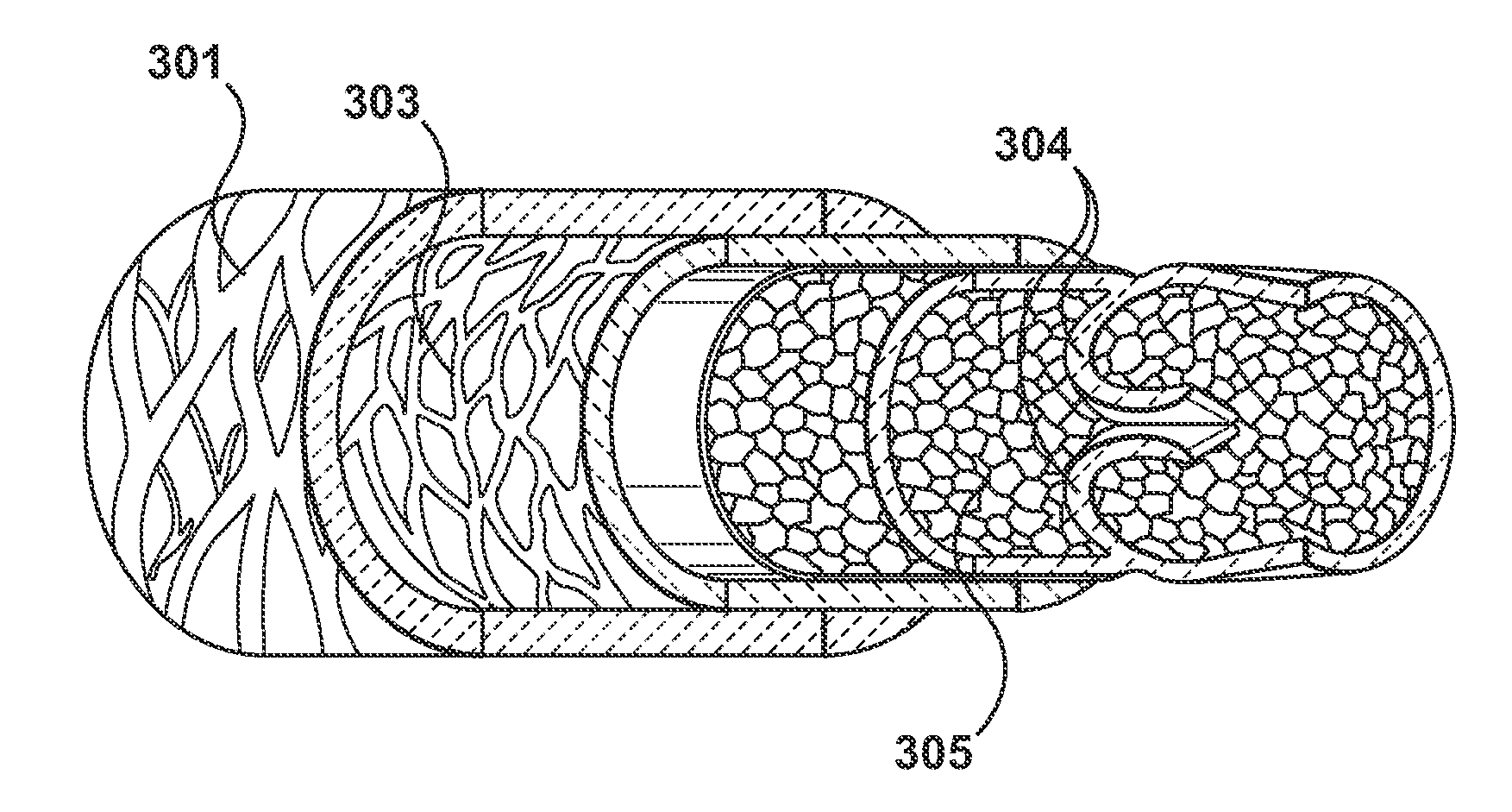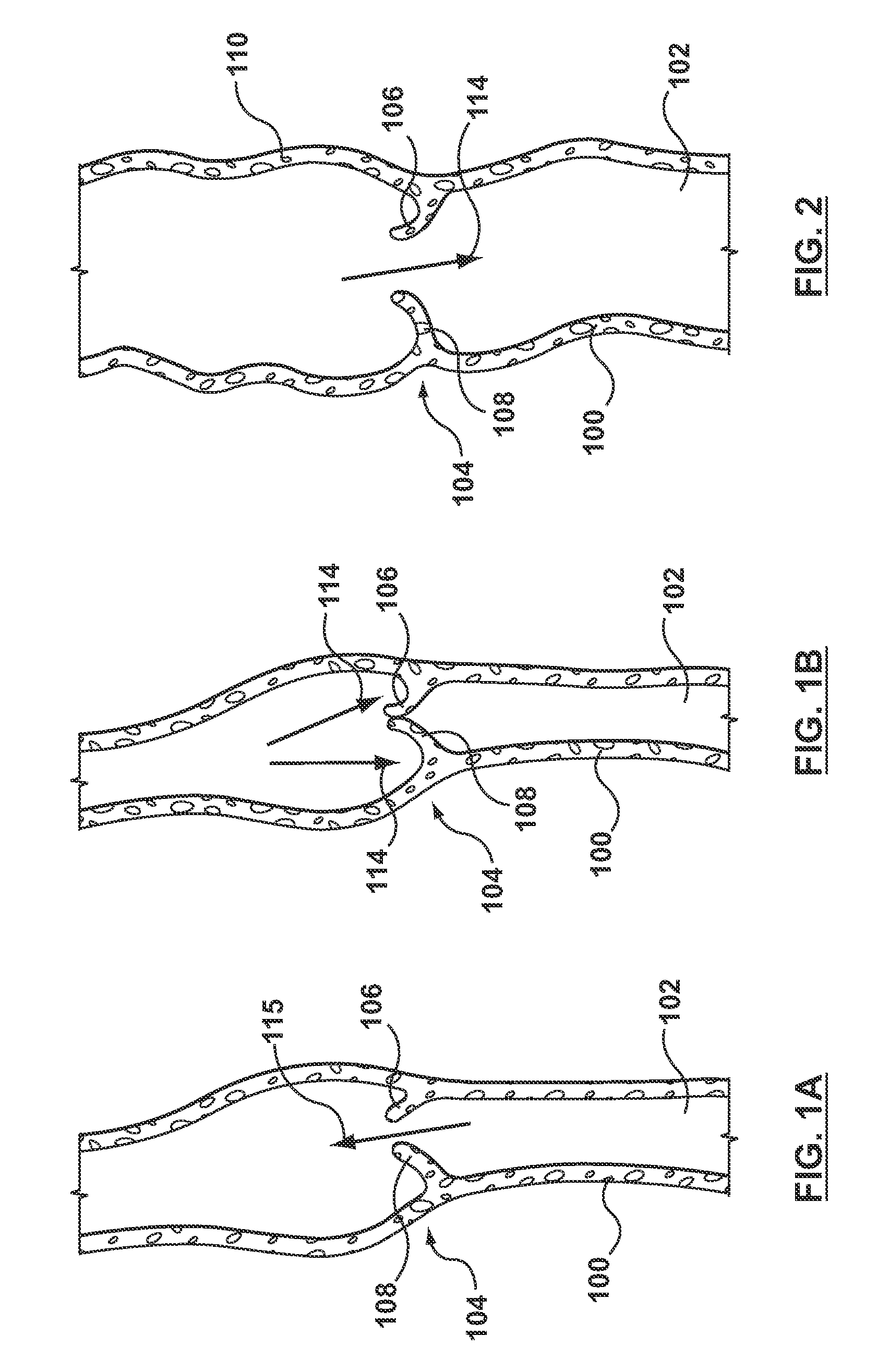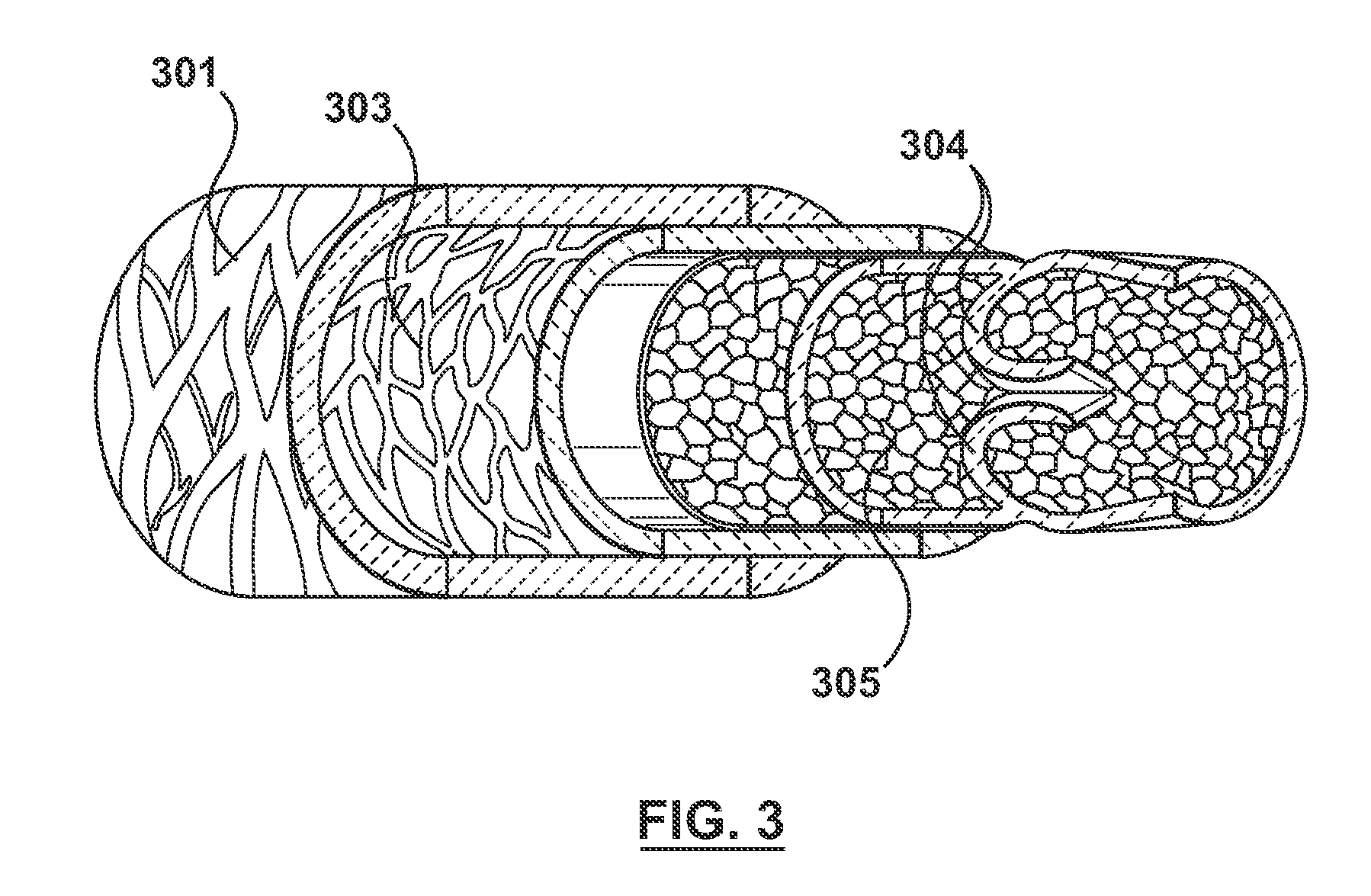Percutaneous Methods for Apparatus for Creating Native Tissue Venous Valves
a technology of venous valve and percutaneous method, which is applied in the direction of catheters, incision instruments, applications, etc., can solve the problems of varicose vein formation, retrograde blood flow in the veins, and distended veins typically in the leg
- Summary
- Abstract
- Description
- Claims
- Application Information
AI Technical Summary
Benefits of technology
Problems solved by technology
Method used
Image
Examples
Embodiment Construction
[0040]Specific embodiments hereof are now described with reference to the figures, wherein like reference numbers indicate identical or functionally similar elements. The terms “distal” and “proximal” are used in the following description with respect to a position or direction of the balloon catheter and the retractable dissecting system relative to the treating clinician. “Distal” or “distally” are a position distant from or in a direction away from the clinician. “Proximal” and “proximally” are a position near or in a direction toward the clinician. With reference to venous valves and / or the flaps of tissue that form a venous valve, the term “proximal” refers to an end or portion in a direction toward the heart by way of blood flow path while the term “distal” refers to an end or portion in a direction away from the heart by way of blood flow path.
[0041]The following detailed description is merely exemplary in nature and is not intended to limit the invention or the application a...
PUM
 Login to View More
Login to View More Abstract
Description
Claims
Application Information
 Login to View More
Login to View More - R&D
- Intellectual Property
- Life Sciences
- Materials
- Tech Scout
- Unparalleled Data Quality
- Higher Quality Content
- 60% Fewer Hallucinations
Browse by: Latest US Patents, China's latest patents, Technical Efficacy Thesaurus, Application Domain, Technology Topic, Popular Technical Reports.
© 2025 PatSnap. All rights reserved.Legal|Privacy policy|Modern Slavery Act Transparency Statement|Sitemap|About US| Contact US: help@patsnap.com



